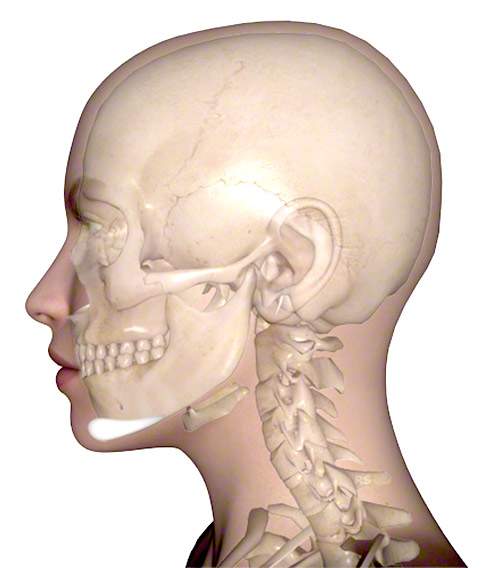
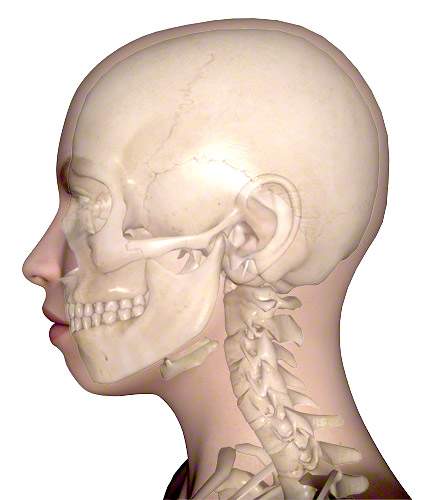
Here we explain chin augmentation for aesthetic reasons. We use implants, bone surgery or non-surgical methods to change your facial profile aesthetically according to your wishes.
Important note on treatment:
It is not enough to treat a receding chin associated with a significant malocclusion with a chin implant.
This requires cooperation between the surgeon and orthodontist, as orthodontic correction of the bite, including bone realignment and tooth position correction, is also necessary.
Chin augmentation for cosmetic chin augmentation is also known as chin plastic surgery or chin augmentation.
How do our Düsseldorf surgeons perform chin augmentation?
You will first receive comprehensive information about the possible treatment options during a consultation. We will explain to you in detail the risks that may be involved and the costs incurred.
One variant of the procedure is surgical chin augmentation, which can be performed under local anesthesia with twilight sleep. However, a general anesthetic is more comfortable.
An inpatient stay at our Yuveo Clinic is not necessary. This procedure is performed on an outpatient basis. After the chin correction, a certain restriction of movement and a careful diet are important for a good healing process.
A double chin is often associated with a receding chin. If this is more pronounced, simultaneous liposuction below the tip of the chin can significantly improve the overall appearance.
We also frequently perform a simultaneous rhinoplasty at the Yuveo Clinic to optimize the profile aesthetically. This procedure is called a profile correction.
Chin augmentation can be performed without surgery using hyaluronic acid.
An augmentation chin correction is also possible without surgery. Hyaluronic acid and collagen are popular fillers that we at Yuveo Düsseldorf can use for this purpose.
This form of chin augmentation involves less effort for both the patient and the doctor. Injections can be performed under local anesthesia and on an outpatient basis.
A more viscous hyaluronic acid is used than that used for wrinkle injections. This also lasts longer, 1 to 1.5 years depending on the product.
The material is injected directly into the chin bone and sculpted. Chin injections are also a good method to ‘try out’ to change your profile.
If the change is satisfactory, a permanent chin augmentation can be performed later.
For the first 2 weeks after the injection, you should not massage the chin area and avoid any form of pressure on the tissue.
One of the risks is that the material can shift and not much of the result of the treatment remains.
How does chin augmentation surgery in Düsseldorf work?
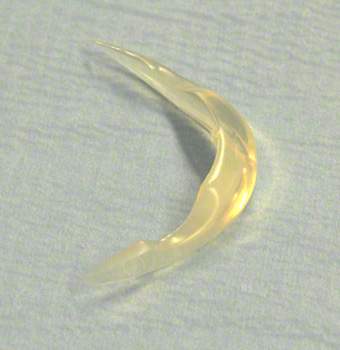
Chin augmentation is usually performed via an incision on the mucous membrane of the lower lip in the mouth. However, it is also possible to perform the operation via an incision under the chin. This is an option if there is already a scar after a chin laceration.
Although chin augmentation with an incision in the mouth does not leave a scar, the risk of infection is slightly increased.
Our Düsseldorf team therefore recommends that you maintain good oral hygiene after chin implant surgery.
Which chin implants do we use for chin augmentation in Düsseldorf?
Chin implants are often used to build up the chin in order to achieve a lasting effect. The associated surgery is somewhat more complex than chin injections with hyaluronic acid.
Chin implants are usually made of silicone and are generally almost sickle-shaped. Thanks to their solid, medium-hard consistency, we can customize the implants for chin augmentation.
They are placed on the edge of the chin bone via the incision described above. The protrusions often extend further into the lateral lower jaw, especially in men.
During the operation, our Yuveo team makes sure that two skin nerves in the immediate vicinity are not injured.
How is the chin correction performed with bone displacement?
Chin augmentation through bone displacement is also known as Chinsliding. It is an option if the patient does not want to make do with an artificial chin implant.
The incision required is slightly larger than when inserting chin implants. The longer healing phase due to bone healing must also be taken into account.
The bone on the chin is sawn through horizontally and the lower piece of bone is moved forward. The fixation is then carried out with metal (screws, plates, wires).
After such a chin augmentation, the steps on the bone can often be felt but not seen, as they are concealed by the soft tissue.
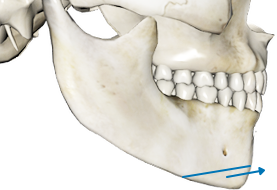
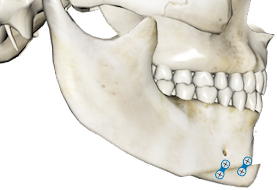
Sources:
- Plastic Surgery – Grabb & Smith – Lippinkott Williams & Wilkins – Philadelphia USA – 2007
- Cosmetic Surgery of the Asian Face – McDurdy, Lam – Thieme – Stuttgart – 2005

